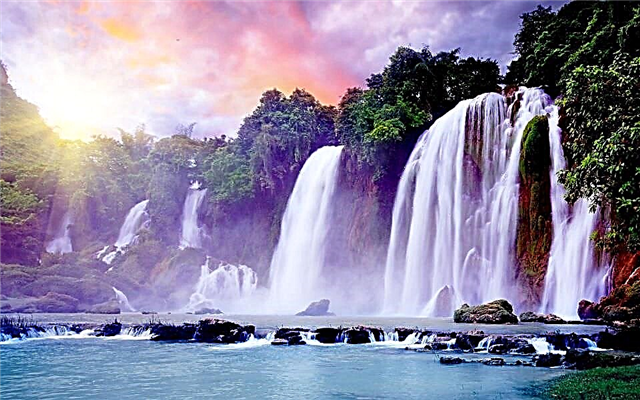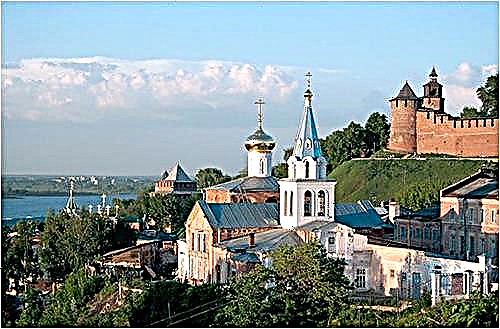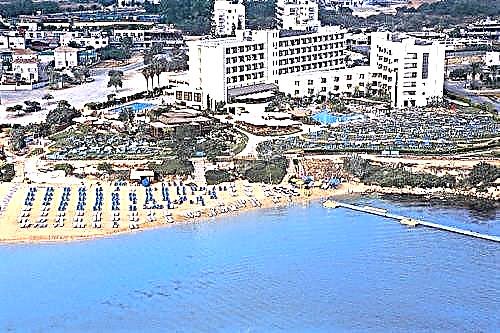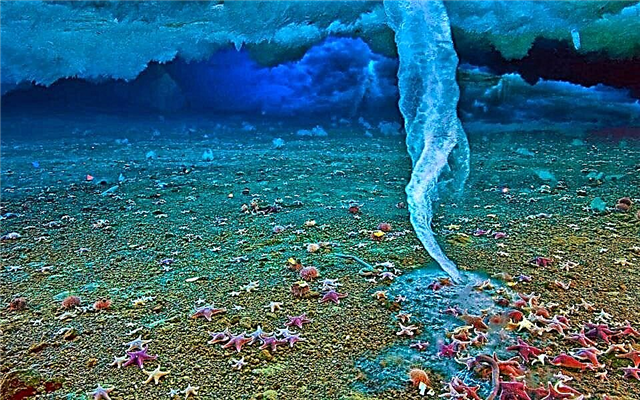When it seems that the world has nothing to surprise us with, it is revealed from a hitherto unseen side. We present you the top 10 secret rooms and other rooms hidden inside famous attractions.
10. Empire State Building

King Kong fought with the planes on top of this tower, aliens blew it up in the movie Independence Day, and this building is also considered a symbol of American architecture. For these and other reasons, tourists have flocked to the Empire State Building for thousands of decades. When you take stunning views from viewing platforms on the 86th and 102nd floors, it is easy to understand why this building is so popular among visitors to the city. But most people will never go up to the 103rd floor.
For security reasons, this level is not accessible to the general public. Only a small ledge and low railing separate visitors from the same fall that King Kong made in 1933. The tiny balcony can be reached through a series of elevators and a narrow metal staircase, but you must be a well-known person to get permission to visit 103 floors. Like Taylor Swift, who visited him in 2014.
9. The Eiffel Tower
 If you climb to the top of the Eiffel Tower, you will see something more than just breathtaking views of Paris. In recent years, a secret apartment has been opened in front of the public, hidden at the top of the building.
If you climb to the top of the Eiffel Tower, you will see something more than just breathtaking views of Paris. In recent years, a secret apartment has been opened in front of the public, hidden at the top of the building.
Engineer Gustave Eiffel created his secret room while working on the tower in 1889, and at that time it was available only to him. Millions of visitors passed by over the years, not realizing the existence of this room.
In 2015, a private apartment was restored to its original condition. Complete with it are wax models of Gustav, his daughter and American inventor Thomas Edison, who often visited Eiffel’s apartment.
8. Rushmore

When Gutzon Borglum began work on Mount Rushmore in South Dakota, his initial plan was not only to perpetuate the memory of America’s famous presidents in granite. He received the go-ahead to create a secret hall, where for future generations will be placed copies of the most important documents for US history. This secret treasury of the United States, hidden behind the stone head of Abraham Lincoln, was not finished at the time of Gutzon's death in 1941. It was subsequently completed by a team of sculptors in the 1990s.
Unfortunately, the hall is not accessible to tourists, since it is too difficult to reach on foot. There is nothing interesting in it except for the repository, which contains brief biographies of American leaders whose faces are carved on a rock, a Gutzon biography, the American Constitution and the Declaration of Independence.
7. Colosseum
 The Roman Coliseum attracts more than four million visitors annually. But not all of them understand that this former place of gladiatorial battles is much more than it seems at first glance.
The Roman Coliseum attracts more than four million visitors annually. But not all of them understand that this former place of gladiatorial battles is much more than it seems at first glance.
Below street level is not one room, but a whole network of underground tunnels. They were once used to house animals such as lions and bears. Here the animals waited until they were lifted into the arena with a pulley. This underground labyrinth was perceived as a great archaeological discovery, and for a long time it has been open to the public. However, a maximum of 25 people are allowed into the Coliseum tunnels at a time, so as not to put much risk on either the tourists or the underground structure itself.
6. Studio Pixar

The young Pixar animator Andrew Gordon found small doors in his office leading into the ventilation tunnel. Andrew crawled over it and found a tiny room with several ventilation sleeves.
Andrew and his colleagues used the room as an underground drinking establishment. She received the beautiful name "Salon of the Happy Seven" and over the years attracted a lot of famous people, from Apple co-founder Steve Jobs to Roy Disney.
Pixar has even made some useful modifications to the Salon, including the installation of a more comfortable door, which was masked by a sliding bookshelf.
5. New York Central Station

Since the 1960s, the twentieth century New York Central Station has been home to a secret tennis club. On the fourth floor of the transport hub is the exclusive Vanderbilt club, where one hour on the court can cost you $ 280.
The court is located behind the upper part of the famous front window of the terminal, which many passengers no doubt looked at, not knowing that someone on the other side was spending time very merrily and with health benefits.
In the 80s of the twentieth century, the court was bought by Donald Trump, the current president of the United States. It was attended by famous athletes such as the sisters Williams and John McEnroe.
4. Hotel Waldorf Astoria

Under the floors of the fashionable Waldorf Astoria Hotel in New York, there is an old train platform with an antique wagon parked. President Franklin D. Roosevelt used to travel between his presidential number and Hyde Park home on the secret Track 61 railway platform without attention.
Rumor has it that Track 61 is still used to transport famous people to and from the hotel.
3. Disneyland
 In third place in the list of secret rooms hidden in famous places is Club 33. The Disneyland alcohol privilege costs $ 25,000 at a time, plus an annual fee of $ 12,000. Because the only place where they are sold is the super-secret, exclusive Club 33. It is located behind an unmarked door on New Orleans Square and was conceived by Walt Disney himself as a perk for corporate sponsors and other VIPs. But when the founder of Disney Studios passed away, membership in Club 33 became individual.
In third place in the list of secret rooms hidden in famous places is Club 33. The Disneyland alcohol privilege costs $ 25,000 at a time, plus an annual fee of $ 12,000. Because the only place where they are sold is the super-secret, exclusive Club 33. It is located behind an unmarked door on New Orleans Square and was conceived by Walt Disney himself as a perk for corporate sponsors and other VIPs. But when the founder of Disney Studios passed away, membership in Club 33 became individual.
Disneyland in Shanghai and Tokyo also have their own Club 33.
2. Station Milano Central
 Milan Station is one of the largest railway stations in Europe, but many of the passengers have never looked into the most impressive room.
Milan Station is one of the largest railway stations in Europe, but many of the passengers have never looked into the most impressive room.
Behind a series of closed doors is Padiglione Reale (or the Royal Pavilion), a luxurious waiting room, built specifically for the royal family of Italy in the 1920s. Although the Italian royal family left the country after World War II, Padiglione Reale is a reminder of the lifestyle enjoyed by the royal people. The hall is decorated with marble interiors, royal emblems and elegant furniture. On the top floor there is also a balcony overlooking the public square below.
1. Harvington Hall

The Harvington Hall estate, built in the 14th century in the county of Worcestershire, has not one, but seven secret rooms called the “Priest's Refuge” (Priestle Hole). These tiny rooms were used to hide Catholic priests during the time of Queen Elizabeth I, when Catholics were persecuted.
Four secret rooms are located near the central staircase. In the Marble Room there is a false fireplace, through which the clergyman could quickly rise to the attic. Another Priestle Hole is designed under the crossbeams of the main staircase. And the seventh is behind the rotary wooden bar in the Charles Dodd Library.
The shelters designed by Nicholas Owen were disguised so well that not a single priest hiding in the walls of Harvington Hall was ever caught.












